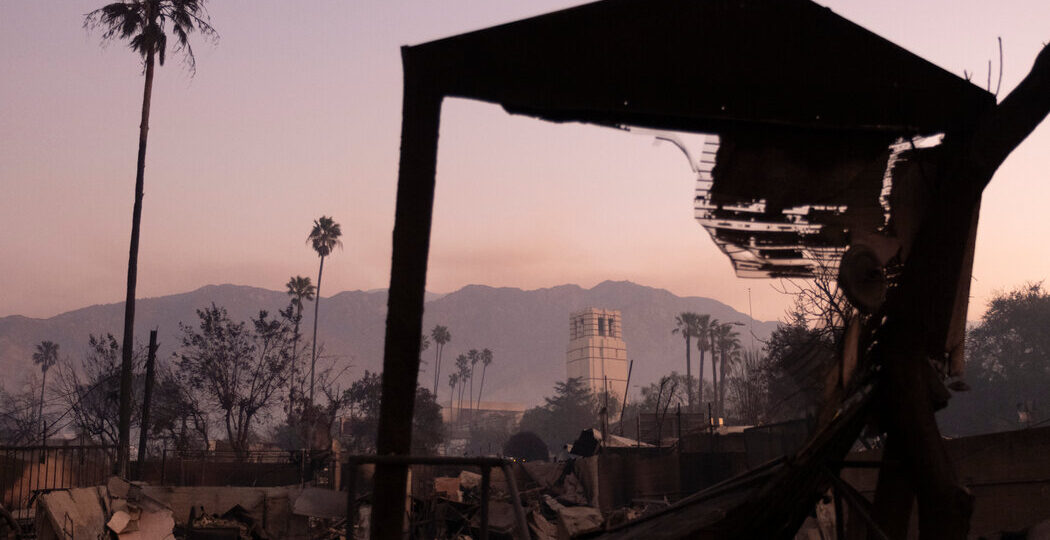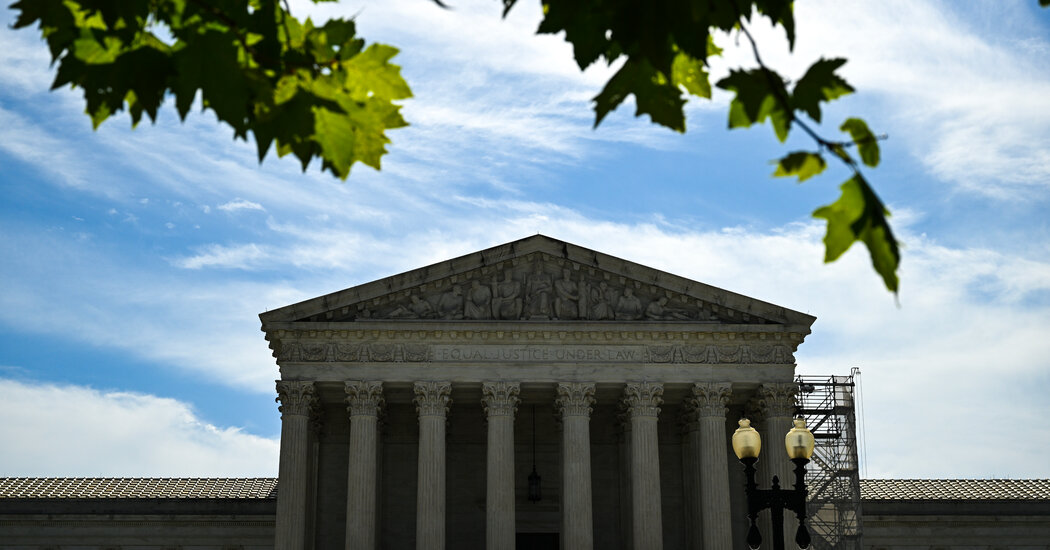January 15, 2025 | by

After a long time of mounting injury from climate-fueled pure disasters, researchers have compiled many misery-filled information units that hint the financial fallout over weeks, months and years.
The fires nonetheless burning in Los Angeles are positive to rank amongst America’s most costly — however there isn’t a excellent analogue for them, making it troublesome to forecast the final word price.
The principle cause is that wildfires have sometimes burned in additional rural areas, consuming fewer constructions and attacking smaller metropolitan areas. The Los Angeles conflagration is extra akin to a storm that hits a significant coastal metropolis, like Houston or New Orleans, inflicting main disruption for thousands and thousands of individuals and companies.
“It appears to be like much more just like the humanitarian state of affairs from a flood or a hurricane than a wildfire that persons are watching within the hills,” mentioned Amir Jina, an assistant professor on the College of Chicago’s Harris Faculty of Public Coverage, who has studied the financial impression of local weather change.
However, a number of mitigating elements may result in decrease prices and a stronger rebound relative to different locations. The cinema capital’s wealth and industrial variety, together with different pure benefits from geography and climate, might permit Los Angeles to stave off a worst-case situation.
Estimating the probably financial losses is difficult at this stage. The weather data company AccuWeather has provided a determine of $250 billion to $275 billion, although a Goldman Sachs report mentioned it discovered the estimate excessive. (Declining to offer a breakdown as a result of its methodology is “proprietary,” AccuWeather mentioned it thought-about many elements together with long-run well being impacts in addition to short-term losses within the worth of public corporations uncovered to the catastrophe.)
Listed here are some components to account for when interested by the full price of the fires.
Bodily Wreckage
Essentially the most simple part of harm is the variety of constructions broken or destroyed, at present about 12,000. That’s fewer than the 18,000 felled by the Camp hearth in Northern California in 2018, however it is a totally different form of home: Zillow values the typical dwelling within the Pacific Palisades ZIP code at $3.4 million; in Altadena’s ZIP code, it’s $1.3 million.
That’s what’s driving early estimates of insured losses progressively larger, now reaching $30 billion, in response to Wells Fargo. However insurance coverage will neither make all householders complete nor pay the complete price of rebuilding. Carriers have dropped hundreds of insurance policies within the affected areas in recent times, and the state-backed insurer of final resort caps protection at $3 million per residential property.
Then there’s the injury to industrial area. Though one landlord managed to guard an outside mall with privately employed water tankers, many other businesses had been gutted.
These neighborhoods could also be higher in a position to recuperate than others hit by wildfire in recent times. The median annual family earnings in Pacific Palisades, for instance, is greater than $200,000, in contrast with about $80,000 nationally; in Altadena, it’s $134,000.
Nonetheless, public funding might be wanted to restore and reconstruct sewer techniques, energy strains and roads. Water infrastructure requires explicit consideration, since ash and contaminants can pollute ingesting water far outdoors the burned areas.
“I’m undecided there’s sufficient cash to go round,” mentioned Margaret Partitions, director of the Local weather Dangers and Resilience Program at Sources for the Future, an environmental assume tank. “Communities haven’t discovered how you can pay for this.”
Work Not Getting Accomplished
Wildfires and hurricanes can have short- and long-term results on employment and productiveness. Individuals who have evacuated could also be unable to work, and the roles based mostly within the affected areas — akin to landscaping, instructing faculty and offering well being care — a minimum of quickly disappear.
Early information is trickling in. The fires haven’t hit main employment facilities or industrial services, however the quantity whole hours labored in Malibu and Pacific Palisades declined 57 p.c the week the fires began relative to the prior week, in response to Homebase, an operations platform for small companies.
Analysts at Goldman Sachs forecast that the fires would knock 15,000 to 25,000 positions off the Labor Division’s employment report for January. That’s lower than the hit from final summer season’s main hurricanes, after which individuals rapidly returned to work.
However the injury doesn’t finish there. A study printed this month in The Journal of Environmental Economics and Administration discovered that giant fires depress job creation within the affected counties. The results rise with the share of the county’s landmass that burned, and Los Angeles County is nearing the higher finish of the size.
In response to one of many authors, Raphaelle Gauvin-Coulombe, an assistant professor of economics at Middlebury Faculty, a fireplace of this magnitude on common reduces month-to-month employment development by 1.46 share factors over three years. Los Angeles has a comparatively assorted industrial base, together with manufacturing, larger training and expertise together with leisure, which may assist it recuperate quicker. However, it depends way more than the standard county on leisure and hospitality enterprises, that are extraordinarily susceptible to fireside.
“When you rely quite a bit on guests in your economic system, the discount in shopper demand might be particularly vital for the area,” Dr. Gauvin-Coulombe mentioned.
The research additionally discovered {that a} federal catastrophe declaration may considerably cushion these adverse impacts by pumping billions of {dollars} into the neighborhood. That always results in a rise in native financial output after disasters, regardless of the devastation.
However that cash comes from someplace, and the prices are rising. As one instance, Congress needed to replenish the Federal Emergency Administration Company’s catastrophe reduction fund after final yr’s hurricane season, and such supplemental appropriations have turn out to be larger and more frequent.
“That’s tax cash coming from me and also you that might have gone to different makes use of if we weren’t as uncovered to this a lot threat,” Dr. Jina mentioned.
Lengthy-Time period Well being Results
Essentially the most instant, concrete impression of the fires on human well being is the physique depend: To this point, 25 persons are recognized to have died, with the tally prone to rise.
However that’s solely the start. Wildfire smoke has a range of ill effects, together with bronchial asthma, most cancers and preterm births, with kids and people with respiratory circumstances probably the most in danger. The actual poisons lofted into the air when homes and their contents burn, quite than simply vegetation, may create much more issues.
Pure disasters additionally set off a collection of occasions that result in hundreds of earlier deaths over greater than a decade, analysis has discovered. People who find themselves pressured to flee their properties or who lose work alternatives deplete their monetary sources, which might diminish entry to common well being companies. Compounding stress can result in dangerous behaviors, and public sources are drained by catastrophe response, all of which provides as much as extra lack of life.
Rising Value of Dwelling
California is an costly place to dwell, and the fires are prone to supercharge that downside within the Los Angeles space, a minimum of within the quick time period, as folks displaced from the fires search new locations to dwell.
“I might search for rents to go up principally instantly,” mentioned Jeff Bellisario, govt director of the Bay Space Council Financial Institute. “We’ve got only a few vacant rental properties, so there’s no actual cushion inside our housing market.”
On the identical time, an much more basic risk is rising: the rising price of property insurance coverage, which was already prohibitively costly in lots of areas of California. When insurance policies turn out to be unaffordable or unavailable, actual property begins to lose worth, which might drain the wealth of households whose primary monetary asset is dwelling fairness.
Consultants say the best way to maintain areas insurable is to make not simply particular person buildings, however complete communities, much less flammable. Meaning retrofitting roofs and siding, including sprinkler techniques, clearing vegetation and enterprise a number of different measures that price cash and require fixed vigilance.
In response to Dr. Partitions, it’s the worth folks might want to pay for residing in stunning locations subsequent to wild landscapes. Up to now, householders haven’t been pressured to shoulder the complete price of prevention.
“Do you actually wish to dwell there? Then you definately higher spend money on far more hazard mitigation than you’re doing,” she mentioned. “They aren’t actually pricing the dangers appropriately in California.”
Doable Paths Ahead
To a big diploma, Los Angeles’s restoration — and the distribution of harms and advantages — depends upon policymakers.
With little intervention, rich people may assemble burned heaps to construct even bigger estates within the still-breathtaking coastal locale. Personal fairness corporations may purchase up land at vastly diminished costs and watch for circumstances to be ripe for rebuilding.
Alternatively, native authorities officers may encourage a sample of reconstruction that eases the town’s affordability downside. Turning some land again into open area whereas rezoning to construct extra items on much less acreage would bolster the housing provide whereas permitting communities to be defended extra simply.
“From a housing economist’s perspective, if now we have alternatives to construct in a extra dense multifamily means, we should always,” Mr. Bellisario mentioned. “The ‘however’ is, we all know we’re in a wildfire injury zone — are you able to do it in a means that may be made secure and insurable and likewise home extra folks than possibly we did earlier than?”
Including extra housing might be essential to stem the stream of individuals already transferring out of California. Locations hit by hearth are inclined to lose inhabitants and never recuperate.
The excellent news is, retrofitting current properties could be comparatively inexpensive, and new communities constructed from scratch much more so, in response to a study by the analysis group Headwaters Economics.
With large-scale disasters turning into extra frequent, “we don’t wish to get to the purpose of normalizing it,” mentioned Kimiko Barrett, an analyst with the agency. “We do know how you can construct issues safer and smarter for this rising actuality we’re .”
RELATED POSTS
View all


